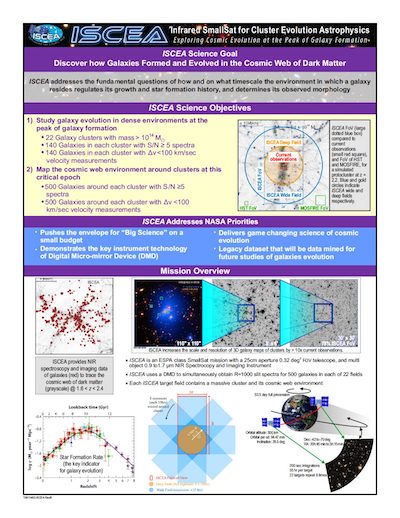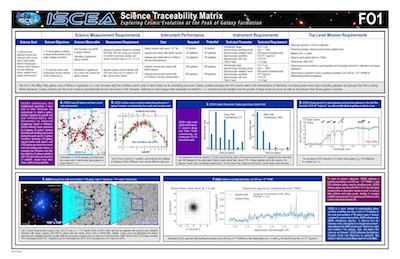
Overview
The Infrared SmallSat for Cluster Evolution Astrophysics (ISCEA) is a 25-centimeter aperture space telescope with a large field of view (0.32 square-degrees) that will primarily study galaxy clusters in the mid-ages of the Universe via spectroscopy. Specifically, it will measure the star formation properties of galaxies in dense cluster environments as well as the field to understand how galaxies evolve in these large-scale structures. In addition, ISCEA will be a path-finder for new technology in space, namely so-called digital mirco-mirror device (DMD), that allow efficient multi-object spectroscopy.
ISCEA was selected by NASA for a mission concept study in September 2018 and is currently under final consideration. If everything goes well, ISCEA will be launched around 2024/2025. The mission is led by IPAC, which will also host the ISCEA Science Data Center.
My Contribution
I lead science and technical studies including simulations to maximize the efficiency of the observations and to assess the quality of the resulting spectra taking into account the pointing stability of the satellite.
More on this topic:
ISCEA @ IPAC NASA news featuring ISCEA

